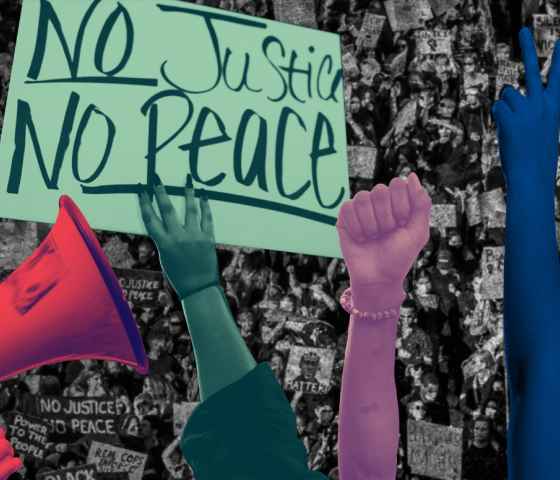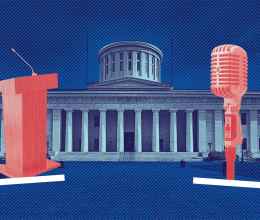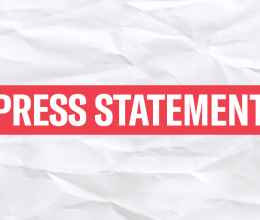To Chairwoman Roegner, Vice Chair Cirino, Ranking Member Ingram, and members of the Senate Higher Education Committee, thank you for this opportunity to provide opponent testimony on Senate Bill 1.
Like its predecessor, last session’s Senate Bill 83, Senate Bill 1 is an often confusing and contradictory mix of language and provisions that appears to have much less to do with actual policy than it does to inflame culture wars, which for many decades have targeted our colleges and universities.
Not every issue in SB 1 is a civil liberties one and time does not permit me to fully opine on the numerous problems impacting civil liberties within this bill. So, I will instead briefly focus on two parts, the nonsensical ban on all diversity initiatives and the attacks on the First Amendment rights of faculty and instructors.
BAN ON "DIVERSITY, EQUITY & INCLUSION" EFFORTS
The ACLU of Ohio believes the most glaring problem with SB 1 and its ban on so-called DEI efforts is this bill contains zero definition of “diversity, equity, and inclusion.” Whether by design or oversight, the end result is the same. That is, with almost nothing to limit anyone or everyone’s interpretation of “DEI,” it means everything is on the table for banishment.
Supporters of SB 1 continue to frame this as merely a ban on racial quotas. But, such quotas are already illegal, have been for a long time, and nowhere in SB 1 is its language limited to this concern. So, what exactly will the General Assembly ban with passage of SB 1? Here is a short, non-exhaustive list:
Some of Ohio’s universities offer scholarships to traditionally and currently marginalized and/or underrepresented people and communities. For example, scholarships exist to exclusively benefit military veterans, physically disabled students, and victims of human trafficking, among many others. But not after passage of SB 1.
The same is true for any and all outreach efforts. One might think it is a positive thing for a university to look around, see the demographics of their students and staff are not reflective of society around them, and then make efforts to diversify. So, they revisit and redouble their recruitment and retention efforts. Again, not quotas. Just a recognition their past and current practices have fallen short.
So, using just one example, perhaps they increase recruitment efforts at Ohio high schools with largely black and brown students. Or rural students. Or first-generation college students. Or maybe it is something as simple and effortless as including language on application and employment paperwork reading something like, “All are encouraged to apply, regardless of race, sex, religion, national origin, sexual orientation, military status, or physical ability.” All of this and much more is diversity, equity, and inclusion in action. All of it is apparently so objectionable and distasteful it must be totally banned, as is required under SB 1.
Indeed, Senate Bill 1:
- Outlaws “any orientation or training course regarding diversity, equity, and inclusion.” (Lines #615-616);
- Axes “the continuation of existing diversity, equity, and inclusion offices or departments.” (Lines #617-618);
- Forbids “establishing new diversity, equity, and inclusion offices or departments.” (Lines #619-620);
- Scraps “using diversity, equity, and inclusion in job descriptions.” (Lines #621-622);
- Prohibits “the establishment of any new institutional scholarships that use diversity, equity, and inclusion in any manner” and places severe limits on existing scholarships that include diversity, equity, and inclusion efforts. (Lines #627-637)
And, to demonstrate SB 1 seeks to ban any and all DEI efforts no matter how small or big, no matter who may be affected, this bill also makes clear “a state institution shall not replace any orientation, training, office, or position designated for the purpose of diversity, equity, and inclusion that is prohibited under this division with an orientation, training, office, or position under a different designation that serves the same or similar purposes, or that uses the same or similar means.” (Lines #638-643)
Proponents of SB 1 feign surprise when opponents claim this bill requires widespread bans of each and every diversity, equity, and inclusion effort, proposal, position, and more. They proclaim opponents are reading too much into it. But all we are doing is reading the actual bill language, as cited above.
But, if all these bans and prohibitions are not the goal of SB 1’s supporters, then the answer is simple – amend the bill to make abundantly clear to all involved what is acceptable versus what is illegal. Again, a great place to start would be actually defining “diversity, equity, and inclusion” for the purposes of this bill.
ACADEMIC FREEDOM & THE FIRST AMENDMENT
Among other things required by SB 1, are the following:
- An affirmation and declaration a state university “ensure the fullest degree of intellectual diversity.” (Lines #668-671). SB 1 defines “intellectual diversity” as “multiple, divergent, and varied perspectives on an extensive range of public policy issues.” (Lines #605-607);
- A requirement “faculty members remain committed to expressing intellectual diversity and allowing intellectual diversity to be expressed” during classroom instruction, discussion, or debate. (Lines #746-749);
At best, this language is the micromanaging of individual courses and instructors by the General Assembly. At worst, it is what opponents have claimed all along. That is, SB 1, and SB 83 before it, requiring all sides of every issue being evenly presented by instructors, ignoring their First Amendment right to academic freedom.
This is precisely why opponents point out these mandates will require any and all coursework on, say, the Jewish Holocaust of the 20th century, to include the perspective, opinions, and justifications of those who orchestrated those mass murders.
If the issue is post-Civil War United States, the obliteration of the progress gained during the Reconstruction period, and the ushering in of so-called Jim Crow Laws, the perspective, opinions, and justifications of those who do not believe Black Americans should have been able to vote, hold elected office, serve on juries, own businesses or work various jobs, and more.
If the coursework addresses labor rights and conflict in the early 20th century United States, the perspective, opinions, and justifications of those who ordered violence and murder against workers and their families.
After all, SB 1 requires the fullest degree of intellectual diversity. But, as we believe at least some SB 1 supporters fully intend, the end result will be instructors and classes avoiding any and all subjects where such scenarios may arise. This is compounded by SB 1’s requirement to slash funding for those who violate SB 1’s fuzzy, inexact requirements. As we often see in the world of First Amendment controversies, vagueness results in silence, muzzling, and fear. Keep people guessing what speech Big Government allows or does not allow, and this is what happens.
Certainly, we want our universities to promote, motivate, and accommodate individual thought, expression, and opinion in classroom discussions, examinations, and projects. Except for some isolated allegations, we do not believe SB 1 proponents have sufficiently demonstrated there is any type of widespread or concerning pattern among Ohio’s institutions of higher education necessitating what boils down to a classroom coup orchestrated by this legislation.
And, again, if supporters believe opponents are reading too much into the bill’s prohibitions and requirements, the answer is simple – amend the bill. To support SB 1, as is, is an invitation to chaos, confusion, and First Amendment violations on all our campuses. Instad, the ACLU of Ohio urges this committee's rejection of Senate Bill 1.








